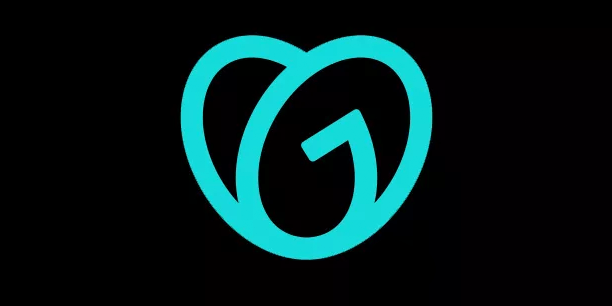SEO is critical to business success in 2025. Google alone still accounts for nearly 64% of all traffic referrals, with Bing coming in at second place. But with the increasingly-crowded field online, it’s becoming difficult for businesses to stand out. That’s where unconventional SEO strategies can help.
In this guide, we’re covering some of the lesser-known SEO strategies that have yielded surprising results, backed by insights from industry experts. Read on to learn how you can make SEO work for your business by embracing the unconventional.
20 unconventional SEO strategies and expert recommendations
1. Aggressive content pruning boosts traffic
One SEO strategy that achieved unexpected results, which goes against what many SEO professionals believe, is aggressive content pruning. Many SEO experts believe more is better. They hold to an outdated tactic that more posts and more pages mean more traffic. That may have been true 10 years ago. But now, especially after the Helpful Content Update (HCU), this is not the case.
I recently worked on a website that had seen its traffic drop 80% over the last 2 years. When I went through Google Search Console and Ahrefs, I noticed that the majority of the blog articles were getting no traffic, and many were put into the dreaded "crawled, but not indexed" category. I immediately created an aggressive content pruning plan, which led to the deletion of more than half of the site's blog articles. Over the next 3 weeks, the traffic on that site increased by over 500%.
There are 2 main factors that I believe led to this:
1. Google focuses much more on topical relevance now, and some of these articles were not as relevant as the others.
2. With the rise of AI and the sheer number of new websites and AI-generated content, Google has become much stricter about its crawl budget.
Gabriel Bertolo, Lead Search Engine Optimization Specialist, SEO Company Boston
2. Target specific user needs for SEO
I chose to create content that targets specific user needs instead of pursuing popular keywords to enhance our SEO performance. I developed extensive topic clusters about user challenges such as sales team difficulties, which established trust and authority that search engines recognized.
The strategy of targeting specific low-volume, high-intent keywords helped us reach our target audience at the beginning of their search journey. This method transformed seemingly unimportant search terms into influential centers, which generated user interaction and higher conversion rates. The goal should be to solve real problems precisely rather than casting a wide net.
SEO success requires abandoning the pursuit of popular keywords that many others are targeting.
Your audience has unspoken questions which you should answer better than any other source. Your content should maintain a personal dialogue with one individual who requires solutions for their specific needs or local situation.
The establishment of trust through this approach develops into authority, which naturally attracts users and search engines to your website. Your main goal should be to establish yourself as the single authoritative voice that matters to your audience rather than trying to outrank competitors.
Dmitriy Shelepin, Founder and Head of SEO, Miromind
3. Embed FAQs on core service pages
One SEO strategy that delivered surprising results on my own site was embedding FAQ-style content directly onto core service pages instead of publishing them as separate blog posts. I noticed through Search Console that many impressions came from question-based queries tied to local intent, such as, "How much does SEO cost for small businesses in [city]?" or, "How long does local SEO take to show results?"
Instead of creating blog articles around each of these, I placed them as concise Q&As within the main service pages. Within a few weeks, those pages started ranking for dozens of new long-tail queries. Not only did organic impressions rise by 33% over a quarter, but the time on page also improved because visitors found answers instantly without leaving the page.
This went against the usual industry approach of chasing long-tail keywords through standalone blogs. By consolidating them into the most commercially important landing pages, I was able to capture search intent, improve user experience, and strengthen those pages' topical authority. It turned a simple content adjustment into a major visibility and conversion driver.
Neha Tiwari, Local SEO Expert, RyseVisibility
4. Authentic storytelling attracts organic shares
I had an unusual themed wedding gallery on one of my photography websites, which I'd initially created with SEO in mind. It read well, but it wasn't ranking in search engines, and it wasn't gaining traction anywhere else either.
So I decided to delete most of it.
I stripped out all the obvious optimization, rewrote the entire piece as a short story about the day by describing what actually happened, and focused more on the couple rather than the keywords.
Within a couple of weeks, it actually started to attract traffic. The reason was that I had stripped back the optimization and made it more about the couple, and they had shared it everywhere! Following their sharing of it, the content was then submitted to wedding blogs, which earned me backlinks, and my website as a whole began to rise in the rankings.
Sometimes it's not just about the keywords and on-page optimization, but also about considering who will be sharing the content.
Kelly Jean, Digital Marketing Consultant and SEO Specialist, Bright Shark Digital
5. Address customer hesitations for conversions
I developed an SEO test on customer hesitation data instead of search volume data. Most marketers target a keyword with at least 5,000 searches per month, but I recorded 62 abandoned carts and identified the same nine-word question asked by indecisive customers.
I created a 1,100-word guide with screenshots and cost breakdowns on the exact phrase. The page received 18 visitors in the first month and converted 4 buyers at $700 each, generating $2,800 in revenue without backlinks or ad spend.
The findings were contrary to what the industry wisdom suggests in terms of traffic volume generating conversions. Learnings came through listening to friction points that keyword tools never reveal. A single page had better performance than ten high-traffic blog posts with more than 5,000 views and zero sales. It has changed my content strategy to verified-buyer language instead of abstract keyword data and has continually produced better revenue results with minimal traffic.
Jin Grey, CEO and SEO Expert, Jin Grey
6. Frequent blog updates improve rankings
One SEO strategy that delivered unexpected results for me was maintaining a routine of blog updates and optimization. Instead of publishing a piece and revisiting it only after months, I've built a system where I review and update my blogs every two weeks. To make the scheduling task easier, I created a custom ChatGPT that generates an optimization schedule for me, so I know exactly which blog to revisit and when. I use ClickUp to schedule these tasks.
The results have been remarkable. Rankings that were stuck around positions 15-20 jumped into the top 5. In several cases, traffic has doubled. In one instance, just two weeks after refreshing a piece on programmatic SEO, it received a backlink from a high domain authority site. We did not do any outreach.
Most people treat optimization as a quarterly or even annual task. But in today's AI-driven landscape, frequent micro-updates make a huge difference. And the best part is, you don't need to do a complete overhaul every time. Small tweaks like adding two or three new internal links, dropping in an FAQ, or updating a couple of statistics or expert quotes can give your content the signal Google looks for.
Subhasri Banerjee, Content Strategist, Concurate
7. Leverage internal site search data
An SEO strategy that resulted in surprising success: Optimizing internal site search data for content gaps.
Back in 2019, during my work with an overwhelmed fitness niche ecommerce client, I was amazed by the saturated competition and fierce PPC bidding. However, with the low-hanging links already acquired and the most popular keywords overused, I decided to dig into something most SEOs completely ignore — their internal site search data.
The level of specialization I discovered was shocking. Users were seeking answers to their exact problems and were often left frustrated by the first page's irrelevant content. Terms like "resistance bands vs. weights for home" or "how to fix squeaky treadmill belts" had dozens of monthly searches on-site and zero answers, not even on our blog pages.
While my SEO peers continued to ignore the in-site search data and used high-volume keyword research, our blog posts were quietly capturing up to 40% more organic traffic in a mere six months.
Moreover, our bounce rate decreased by 35%, as we seemingly started to answer far more queries discussed directly and in full on the internet. Google saw this surge in interest and ranked us far higher than we ever dared to target.
This experience is different simply because most of us, SEO experts, concentrate on the numbers rather than the real masterminds behind them, which are the visitors. Implementing client insights in Google Analytics is like getting the details from Captain Obvious — yet 90% of websites ignore it from the start. It demonstrates that the ultimate SEO strategy isn't about search engines but your visitors' desperate hunt for what you aren't giving them yet.
Ameer Draidi, SEO Expert, Circular Web Design
8. Optimize Google Reviews with local keywords
One SEO strategy that yielded surprising results for my website was optimizing Google Reviews with location-based keywords. Instead of focusing solely on technical SEO and backlinks, I asked a few clients to leave genuine reviews mentioning my services as a freelance digital marketing strategist in Malappuram.
To my surprise, this simple step improved my local visibility faster than many conventional link-building tactics.
Within weeks, I started ranking for local intent searches where competitors with stronger backlink profiles weren't showing up.
This approach differed from traditional wisdom in the industry because most SEO advice emphasizes backlinks and on-page tweaks, while I focused on leveraging user-generated content and local trust signals. By combining authentic client feedback with keyword strategy, I was able to boost both credibility and local rankings simultaneously.
Noufal AP, Digital Marketing Services, Noufalap
9. Reddit activity increases AI mentions
I wanted to test what I could do to increase mentions for a client in different LLMs, and it also showed improvement in organic results and traffic.
It was a relatively simple exercise; we began being active on Reddit, simply helping and mentioning my client's brand in 10-15% of the different answers we provided on the platform.
Initially, it was tedious as we frequently met the threshold for "spam" on Reddit, but it became easier as we started to gain credibility.
Simultaneously, we created some ultra-specific FAQs on my client's website and linked them to the footer so it was easy for the crawlers to find them.
Although it's still in the early stages, it's already showing promising results. On Google's AI overviews, we grew from 12 citations to 45, and ChatGPT now recognizes who my client is, compared to before when it had no knowledge of them.
It all comes back to brand mentions, and as this effort grows and we continue to work on it, it will likely grow exponentially. It was an experiment, and it's proving to be highly effective.
Phillip Stemann, SEO Consultant, Phillip Stemann
10. Simple date updates refresh content
Honestly, one of the most surprising things we've seen with our SEO was how much a simple date update can do. Everyone knows that content freshness matters, and of course, a full content refresh with new information is the best way to get that boost. But the time investment in this case is significant.
We ran an experiment because we had a bunch of evergreen content that was good, but it was just stagnating. We thought, what if we tried a low-effort approach first? We took some of those articles and simply updated the date in the article's title and in the CMS. And that was it. It went surprisingly well. Not many of us believed this would actually work, especially since we weren't touching the content at all. It just went against common sense and the conventional approach to freshness. But still, it was worth a try.
And it worked — we saw a nice uptick in average positions and the organic traffic the articles generated.
This led us to conclude that merging this with small, but still significant updates to our articles would be a game-changer. And actually, a combined approach — with a date update and a few minor content tweaks — worked even better. It showed us that you don't always need a major overhaul to get a major result. Sometimes, the smallest changes can make a huge impact and give you that freshness signal you need.
Agata Gruszka-Kierczak, International SEO Manager, WhitePress
11. Optimize landing pages for ecommerce SEO
One strategy that recently gave me and one of my clients unexpected results was optimizing and indexing landing pages on an ecommerce website. Traditional SEO advice would tell you to noindex landing pages and only index PDPs, but we found that as long as the landing page is aimed at a different use case, search intent, or target customer (even if it's the same product), you can get surprisingly good results. Just make sure to optimize the copy, meta title, and meta description for the differentiator.
Chris Burdick, Senior SEO Consultant and Strategist, Chris Burdick SEO
12. Capitalize on common misspellings
We've noticed that a few of our clients working in technical, sophisticated (and to the layman, quite confusing) industries manage to accidentally, but organically, produce incoming traffic and high rankings for mistyped, misspelled versions of their software. One of our clients who work within the high-end financial software sector was ranking in the UK's top five search results for searches missing just one letter of a highly popular piece of technology that they license!
We tried to think of ways to take advantage of this, and in the end, settled on writing several blogs, FAQs, and “must-know” guides with titles like “Common pitfalls and mistakes to avoid when handling [x] software,” wherein we can highlight the common misspellings. As a result, we see an increase in the keyword usage on the site, and further increase in traffic, as well as moving the domain strength forward for more long-term benefits.
Jordan Dennison, Digital Marketing Executive, Growthlabs
13. Focus on closing content for conversions
One of the most unexpectedly effective SEO strategies I applied was focusing on the closing content of product and category pages for ecommerce clients.
Conventional SEO wisdom often emphasizes the introduction of a page with keyword-rich headlines, the first 100 words, and overall structure. While those elements are important, I noticed that many webshops left the end of the page empty or simply repeated the same keywords. This created a weak user experience and overlooked a real opportunity.
We started testing unique closing paragraphs placed under product listings and category texts. Instead of repeating keywords, we wrote short, natural sections that answered common customer questions, suggested related product types, or highlighted unique selling points. For example, we recommended compact keyboards for smaller desks or affordable headsets with premium sound. The goal was to sound like a real salesperson offering a final recommendation, not just SEO copy.
The results were clear. Pages with these closing texts ranked higher, attracted more long-tail searches, and showed lower bounce rates. Conversions also improved, as customers received that last piece of guidance before deciding to buy.
This approach stood out from conventional practice in two ways. First, it shifted attention from the start of the page to the customer's journey at the end. Second, it positioned SEO text as both a search tool and a sales tool, connecting intent with action.
What began as a simple test turned into one of the most impactful SEO tactics I have worked with. It proved that even the parts of a page people usually overlook can hold some of the biggest potential.
Rasmus Schack, CEO, Onemedia
14. Less SEO content can improve rankings
For an ecommerce website, we had an ongoing initiative to optimize category page SEO descriptions (which usually go at the very end of the page). Essentially, we followed a common practice: check Google Search Console keywords, find what is missing in existing content, add new keywords, and repeat.
At some point, we noticed that category pages with more than average text volume started to perform worse, despite having better keyword coverage. We rolled them back to the previous iteration, and positions recovered. Then we decided to remove the SEO content for a group of pages, and we achieved the best positions we ever had. After that, we did the same for other pages, and it worked just as well.
It is worth noting that the content wasn't AI-generated. Usually, it was about how to choose a product from a certain category.
The takeaway is: definitely try removing SEO content for a couple of pages and see the results. We did it for low-priority pages first and applied the approach to the main categories afterwards.
Yevhen Koplyk, Head of Marketing, WiserBrand
15. AI-first approach doubled traffic and sales
When I tested an AI-first SEO approach on just two pages of my site, traffic and clicks more than doubled, and sales went up by 50 percent. What made the difference wasn't stuffing in keywords; it was setting the pages up so AI could actually understand them. I started with a TL;DR at the top, laid out a clear table of contents, added FAQs and comparison charts, and used the right schema markup. It showed me how quickly results can shift when content is built for how AI pulls answers.
William Smith, Founder and SEO + AI Search Optimization Strategist, Boston SEO Services
16. Podcast guest appearances build links fast
When I first launched my new blog, I knew I needed to build links and get attention. I didn't have time to write numerous guest posts, so I decided to try pitching podcasts.
I ended up being a guest on approximately 80-90 shows in 3 months.
What was surprising is that the links from those shows took me from a DR 0 to DR 50 in that same timeframe! Usually, this would take years for most sites, and I was a solopreneur doing this.
Even better, the attention built up a lot of trust, so I gained sales and clients from it.
It's not for everyone (and honestly, I hadn't heard anyone talk about trying this before I gave it a go), but podcast link building is incredibly effective!
Daniel Daines-Hutt, Head of Content, Zero To Mastery
17. Short FAQ content drives targeted traffic
One of the SEO surprises for me was writing super-niche FAQ content. Instead of investing money in long, 2,000-word guides, I focused on short, to-the-point answers to extremely specific questions people were searching for on Google. These small pieces of content started appearing in featured snippets and even voice search results, driving traffic much faster than expected.
This approach broke from the industry standard "longer is better" model but succeeded. Not only did it bring in new traffic, but it also directed visitors to my more detailed articles once they realized they could gain additional value from those short responses. It demonstrated that sometimes short and simple content can be more effective than the long-form content playbook.
Adrian Podyma, Founder | SEO Specialist, Rankulate
18. Target niche keywords for smaller clients
Focusing on specific keyword niches is a strategy that has worked to grow organic traffic and revenue for some of my smaller clients.
Some agencies try to target keywords with the highest demand without considering the client's products or their chance of visibility against larger competitors.
During our analysis, we identified an untapped opportunity with low keyword difficulty and decent demand. After confirming with the client that this matched their product line, we created a new category and helped the client populate it with relevant products.
Within just a few months, the page ranked in the top three positions for most of its targeted keywords. It became the site's second most-visited organic page after the homepage and their top-performing category, driving the majority of their non-branded traffic.
Takeaways for working with smaller clients:
- Know their industry: Immerse yourself in the market landscape.
- Ask questions: Use discovery sessions to deeply understand what they sell.
- Spot low-hanging fruit: Identify competitive advantages and keyword niches with high demand but low competition.
Christophe Deneulin, SEO Consultant, Christophe Deneulin SEO Consultancy
19. Prioritize reader value before SEO optimization
For our blog, we start by creating content for the reader, not for Google. Instead of starting with keywords and analyzing SERPs, we build content around what our audience actually needs: deep dives into apps, templates to move their work forward, tips for getting the most out of the apps they already use, examples of how to use Zapier better, and things like that. We only spend a few minutes on SEO optimization the first time around. The goal of the original article is to be helpful for the intended audience, based on a deep understanding of their interests and needs.
Then, around the 100-day mark, we come back to the piece for an SEO update. (Shout out to Matt Bowers, our former SEO lead, for the idea.) At that point, the article has had time to give us data. We can see queries, impressions, clicks, and even downstream metrics like first-touch signups. Based on all that, we add structured keywords, refine metadata, update examples, and make sure the piece lines up with current search intent.
Conventional wisdom says you should bake SEO in from day one or risk "missing the window." But our two-stage process has worked well for us — our blog has driven massive traffic for years. Plus, it consistently produces a second wave of growth. Articles that might have plateaued after the initial launch can get a nice boost in traffic following the 100-day update. And we always know we've covered our bases.
The moral here is that prioritizing the human reader up front doesn't just build trust; it also creates a stronger foundation for SEO. Google (and now AI engines) reward that authenticity, and the optimization we layer on later amplifies it.
Lane Scott Jones, Director of Content Marketing and Corporate Marketing, Zapier
20. Relocate trust signals to boost conversions
Something we did that was a blend of SEO and CRO that we were surprised on, was removing a banner that displayed our awards, certifications, and the like on our location pages. Before, we figured this banner would act as a great trust signal to users who land on our site from our GBPs, as E-E-A-T (expertise, experience, authority, and trustworthiness) is not only wanted by Google, but customers, too. The banner was near the top of the page, but because of that, it was pushing down our contact form and introduction copy. The banner is now near our footer, so it's not gone completely, but out of plain sight.
After removing it, we saw an increase in conversions almost immediately. So while traditional advice from SEOs is to display material that showcases your E-E-A-T, you also have to think wisely on what page elements can impact your conversions, too! We figure that our high reviews and rating on our GBPs must be acting as enough of a trust signal that when they click to our website. So they already trust us, and are ready to learn more about how we can help.
John Sammon, CEO and Founder, Sixth City Marketing







